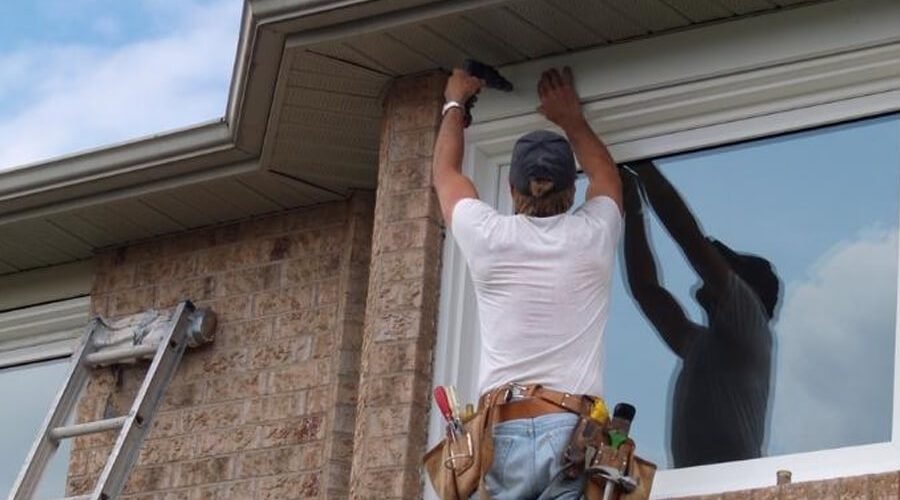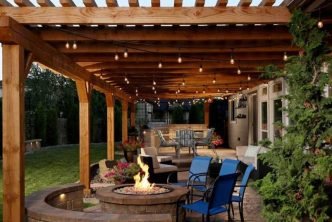Nobody wants the hassle of replacing their windows now and then. But when the time comes to do so, you can bank on a contractor like Maverick Windows – window replacement experts serving all of Dallas.
When you install a window, you want it to serve its purpose for years. In so doing, you can get value for your investment. And while maintenance is necessary to keep your windows in top condition, low maintenance could be your preferred option, especially if you consider the cost and time that goes into the process.
Scoping out the market for materials that can stand the test of time while requiring minimal maintenance? Here are options that tick these two boxes:
Table of Contents
1. Vinyl
Vinyl is a very versatile material used in various applications, from door frames to rain gutters. It is renowned for its durability and low maintenance needs, making it a great choice for windows. Similarly, its thermal performance is great, meaning it can keep your home insulated while also keeping energy costs low. And since windows usually account for nearly a quarter of the heat lost in a home, choosing vinyl can have a tremendous impact.
Plus, vinyl windows come in all shapes and sizes, making it easy to give your space a custom look. And if you prefer a specific color, you can either repaint the frames or buy pre-colored vinyl frames. Invest in high-quality vinyl, as the low-cost and usually low-quality alternatives tend to fade or crack over time when exposed to the elements.
2. Fiberglass
Fiberglass is a sure winner if you need a stronger alternative to vinyl. The material’s dimensional stability ensures tighter seals and better insulation, which usually translates to lower energy bills in the grand scheme.
Fiberglass window frames are highly weather-resistant, meaning they can withstand moisture and wide temperature variations. What’s more, they don’t require much maintenance, as a simple wash and rinse are usually enough to keep them in pristine condition.
Fiberglass frames are also available in various colors and textures, allowing you to find the perfect design for your home’s exterior. That way, you can enhance your home’s aesthetics while creating an inviting ambiance.
Even so, expect to dig deeper into your wallet for fiberglass frames, as they are more expensive than their vinyl counterparts. After all, great value comes at a price, no?
3. Aluminum
Okay, aluminum isn’t for everyone, but it does its job well in homes situated in warmer climates – think states like Texas, Arizona, and Florida. Aluminum’s conductivity makes it less ideal for cold areas as it’s susceptible to moisture damage.
Nonetheless, it’s lightweight, making it easy to install, and offers great energy efficiency. If the elements are a concern, you may opt for powder-coated aluminum frames, which are less likely to corrode.
Also, its flexibility means it can be reshaped into different styles and shapes, giving it a distinct look. So, if you want to redefine the appearance of your home, aluminum is a great option.
Likewise, aluminum frames are typically narrow. As such, they leave more room for window panes, ensuring you get ample natural light into your home for an airier look and feel.
As for maintenance, a soft cloth (microfiber would be ideal) and some soapy water will suffice. Skip the abrasive cleaning agents to keep the finish looking perfect.
4. Composite
You probably would like to install wood windows. But wood doesn’t take a beating too well – moisture, insects, heat, and other elements may conspire to wreck your window frames.
The solution? Composite frames? Crafted from resin or recycled plastic and wood fibers, composite windows are more rugged as they’re not prone to moisture damage. They also provide ample insulation, keeping out noise and cold drafts. Besides, they mimic the look of wood, offering the ultimate convenience and satisfaction.
Composite windows require semi-regular cleaning with a damp cloth. Easy as pie – no lingering for ages trying to get them sparkling clean.
5. Clad Wood
Nothing comes close to the earthy look and warmth of wood. But if vinyl or fiberglass are not in your equation, clad windows may be your answer.
Clad windows sport an extra layer of metal – usually aluminum or vinyl – which provides superior protection from moisture damage and other elements. The cladding also enhances the window’s insulation capability, as wood windows tend to warp and become drafty. So, you don’t have to give up the classic wooden look yet – clad wood windows let you stick to your aesthetic guns.
Although they require more maintenance than other materials, they’re a worthy investment. Generally, a quick gentle wash and polish (once in a while) are sufficient to help clad wood windows retain their luster.
Which option tickles your fancy? Ready to order some new frames and bid a fond farewell to your single-glazed windows? Sure, you might pay more for some of the materials above, but the long-term value and quality are well worth it. We hope you make an informed choice.





